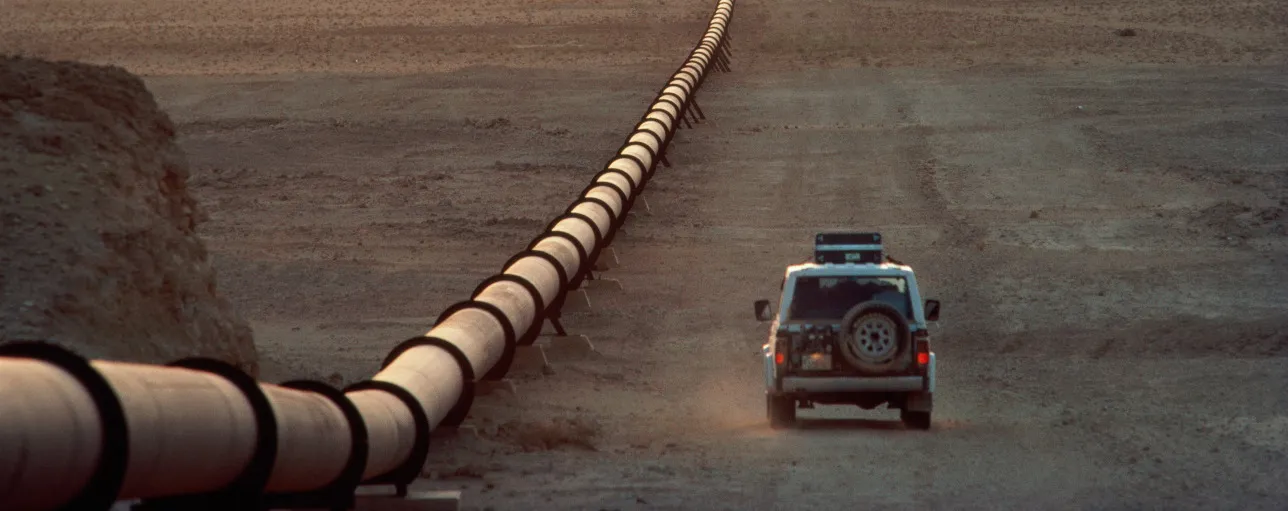Gas pipeline operators are discovering how a method called Bayesian Networks can, combined with machine learning, address data uncertainties in their risk management systems. This approach turns uncertainty into an ally for pipeline risk managers. (1)
Published: 18 November, 2020
- Pipeline risk managers are turning uncertainty into an ally using Bayesian Network statistical methodology
- DNV’s unique approach combines the method with machine learning through a cutting-edge digital solution in which operators do not need to wait on data to perform risk assessments
- Pipeline operators in the Middle East see operational and compliance benefits.
When performing risk assessments, choosing which data to gather first is complicated. Data may be missing or unreliable, and there may also be uncertainty over failure mechanisms such as corrosion, third-party damage and others. In addition, collecting and assessing the validity of data from sensors on pipelines, inspections and front-line operatives is expensive. With safety at the top of the agenda, operators therefore must make tough cost-benefit decisions when designing data-driven risk management strategies.
When data is not available, traditional risk assessment methods require operators to conduct pipeline risk assessments based on worst-case scenarios.
With risk assessments based on Bayesian Networks, operators do not need to gather all the data in the same way.
Uncertainty helps risk managers make the right decision
Bayesian Networks let risk managers produce a statistical model that can graphically represent a set of variables and their conditional dependencies on each other. Consequently, operators can simultaneously model from cause to effect in a simulation, or from effect to cause for diagnosis. In addition, the machine-learning process is stopped when the cost of data-gathering activities outweighs the benefit to risk predictions.
It lets pipeline operators see everything that could happen to the pipeline with its associated probability. There is always uncertainty within the risk assessment but understanding the degree of uncertainty and where it is pin-pointed improves the decision-making process.
Bayesian Networks is the logical next step in pipeline risk management because it incorporates data uncertainty and provides justification for how much an operator should invest in collecting data about buried assets.
Quantifying the effects of data uncertainty through Bayesian Network modelling lets operators predict in near real-time the risk of all possible events. Here, uncertainty is not the enemy; it actually drives the decision-making process. With Bayesian Networks, every time data is gathered, future risk predictions become more certain.
This saves cost and time while keeping threats below acceptable levels. Our work applying the methodology for pipeline operators shows that they are consistently saving time, thereby freeing up resources that can be spent on another pipeline.2
This logic lies at the heart of DNV’s Multi-Analytic Risk Visualization (MARV™), a smart risk-assessment approach developed over five years of research. It is now being applied to offshore and onshore pipeline systems.
As Figure 2 illustrates, MARV captures known pipeline data as well as variables that are unknown, such as missing data, and knowledge uncertainty. MARV can then predict all possible futures of a pipeline and show the results visually. The user can perform fully quantitative risk assessments, evaluate life extension strategies, prioritize data gathering, plan mitigative actions, and explain the hidden root-causes of risks.
Discovering what pipeline data to look for within an organization
MARV also helps to quantify the effect of uncertainty and to understand, for example, how to direct information-gathering efforts. Because MARV places a value on variables that risk managers want to track, it suggests what to look for, and therefore where to look for it in the company.
Global experience proves the value of smarter pipeline risk assessment
MARV has been applied in almost every world region and on pipelines operating under varying conditions and differing regulatory regimes such as Australia, Russia and the US.3-5 It has been applied to risks including internal and external pipeline corrosion, stress corrosion cracking, electrical currents, and illegal tapping of oil pipelines.
DNV has also developed MARV for combatting external corrosion and the risk of third-party damage to a natural gas transmission pipeline.6
Bayesian Networks were practically unused in the pipelines industry just five years ago but have become a growing trend because of the way they can counter uncertainty.
MARV is regularly reviewed and updated to align with customers’ needs.
Sample Projects:
- California Energy Commission (three projects on gas lines, underground gas storage, and earthquakes)
- Petronas (SCC)
- Kinder Morgan (SCC)
- CNPC (internal corrosion on/offshore, external corrosion)
- Shell (offshore internal corrosion), etc.
Regulation and skills are key to a Bayesian future
Regulation will be a key driver for uptake of Bayesian Network approaches in pipeline risk assessment.
In other regions, especially the US, regulators are moving towards requiring operators to quantify risks rather than considering the relative risks. This is to encourage a better understanding of where to apply resources and to help quantify the benefits of these investments. MARV could potentially help with this process, as pipeline operators can quantify both risks and benefits.
References:
- ‘Quantitive assessment of corrosion probability—a Bayesian Network approach’,F Ayello, S Jain, N Sridhar, and GH Koch (2014), Corrosion: November 2014, Vol. 70, No. 11, pp. 1128-1147
- ‘How many excavations are required to confirm the absence of SCC on a pipeline?’, F Ayello, T Bubenik, A Sanchez and N Sridhar, paper 9346, Corrosion 2017/NACE Conference and Expo., New Orleans, Louisiana, USA, March 26–30, 2017, NACE International, Houston, TX
- ‘Corrosion threat assessment of crude oil flow lines using Bayesian network model’, N Sridhar, G Koch, F Ayello and V Khare, Corrosion Engineering, Science and Technology, Vol. 50, Issue 3 (May 2015), pp. 236–247
- ‘Corrosion risk assessment using Bayesian Networks – lessons learned’, F Ayello, N Sridhar, S Guan and A N Sánchez, CORROSION Risk Management Conference, Paper No. 8352, May 2016, NACE International, Houston, TX, (2016)
- ‘The application of Bayesian Network threat model for corrosion assessment of pipeline in design stage’, G Liu, F Ayello, J Zhang and P Stephens, Proc. 2018 12th International Pipeline Conference IPC2018, September 24–28, 2018, Calgary, Alberta, Canada, paper 78299
- ‘The use of sensitivity analyses for optimum data gathering in risk and threats assessments’, F Ayello, H Chen, N Sridhar, L Ruiz, T Sera, M Shironishi, Proc. 2018 12th International Pipeline Conference IPC2018, September 24–28, 2018, Calgary, Alberta, Canada, paper 78402
Disclaimer:
DNV prides itself on providing accurate information but makes no claims or guarantees about the accuracy, completeness or adequacy of contents in this publication, and disclaims liability for any errors or omissions. The authors’ views here do not necessarily reflect DNV’s views.

